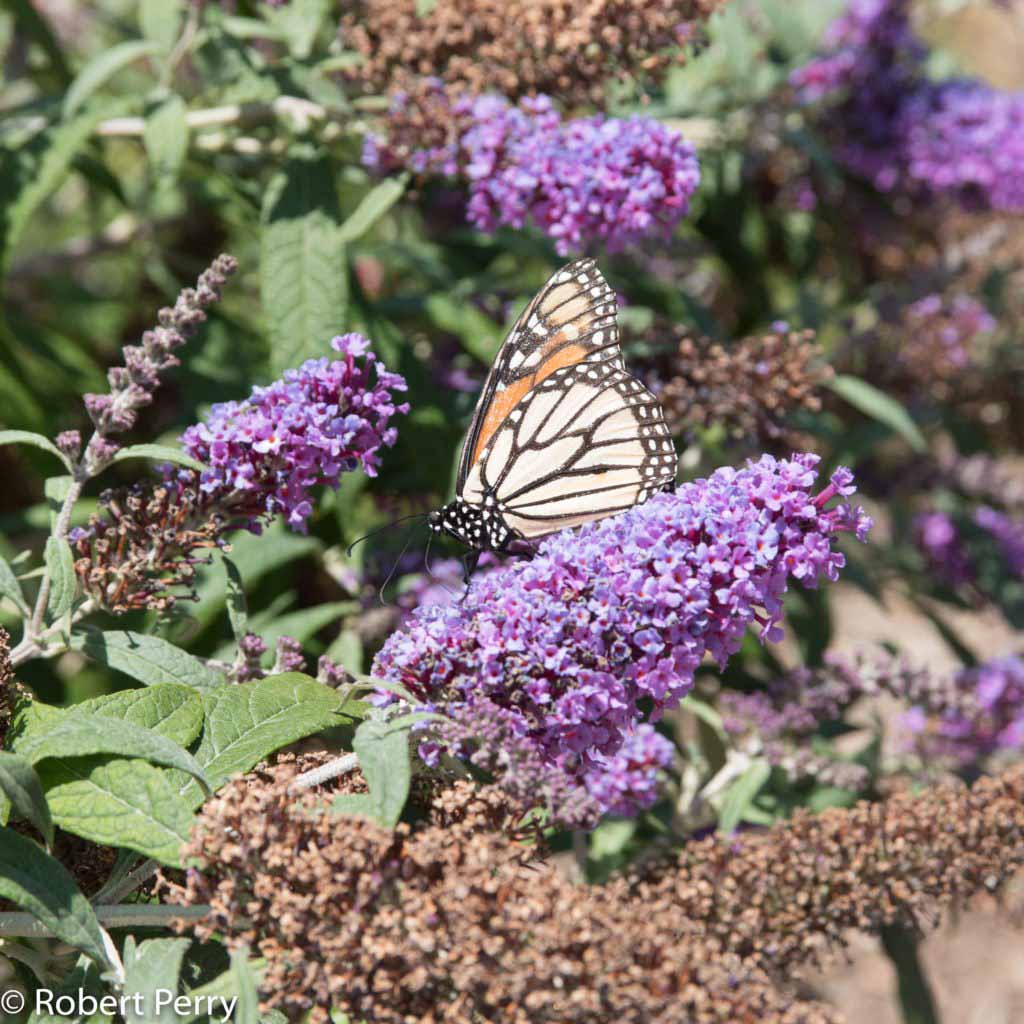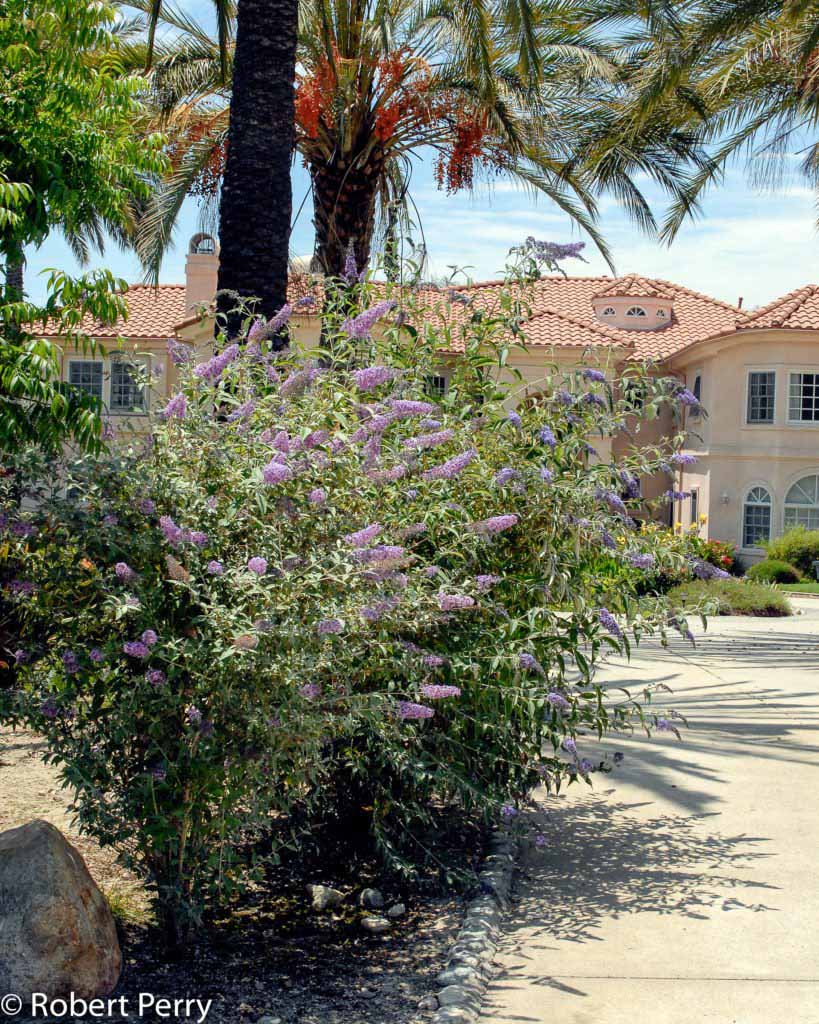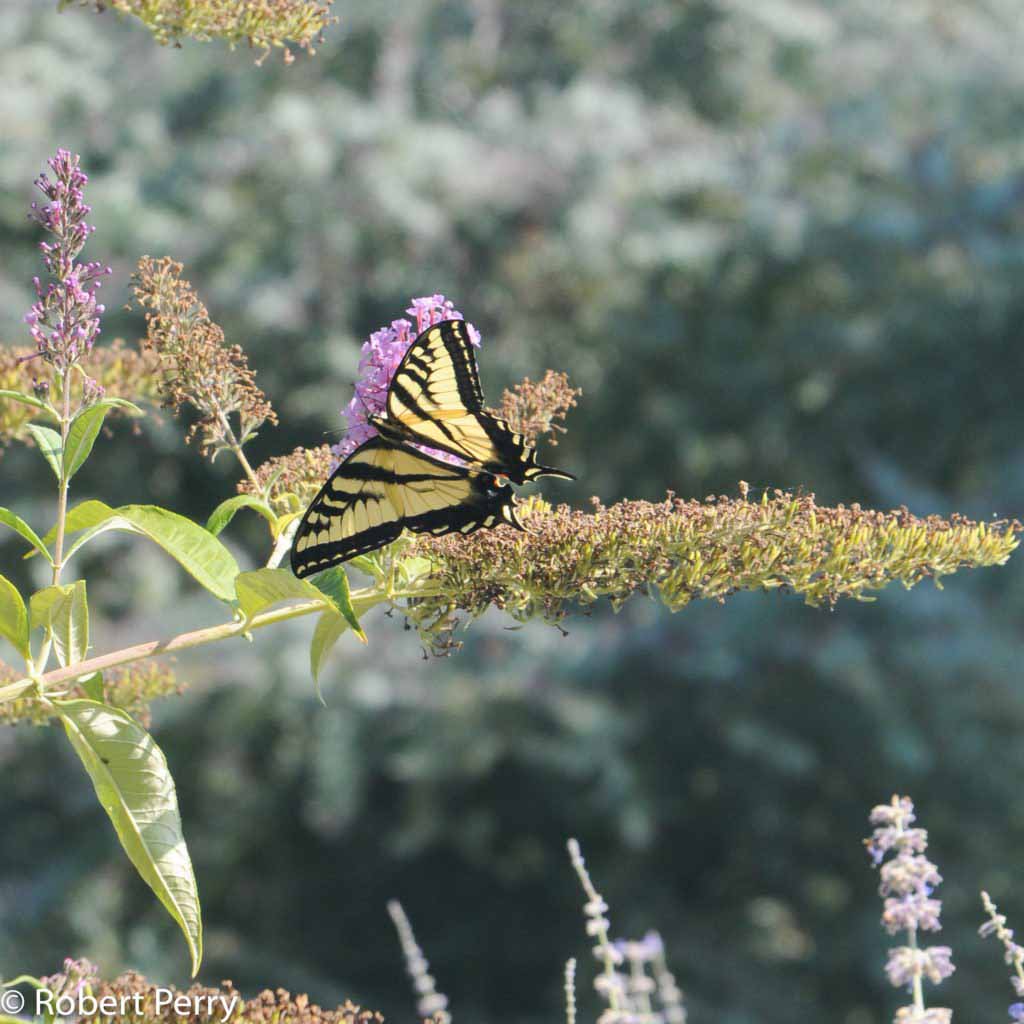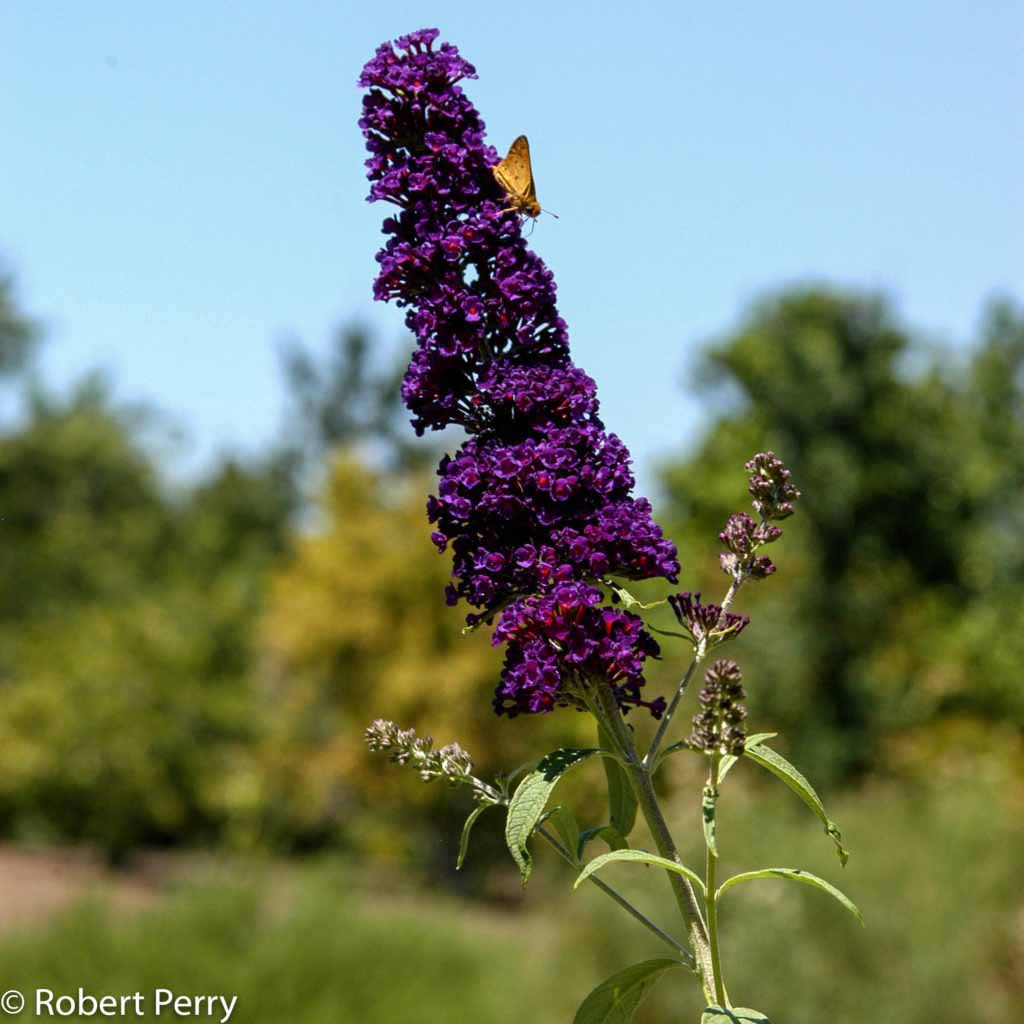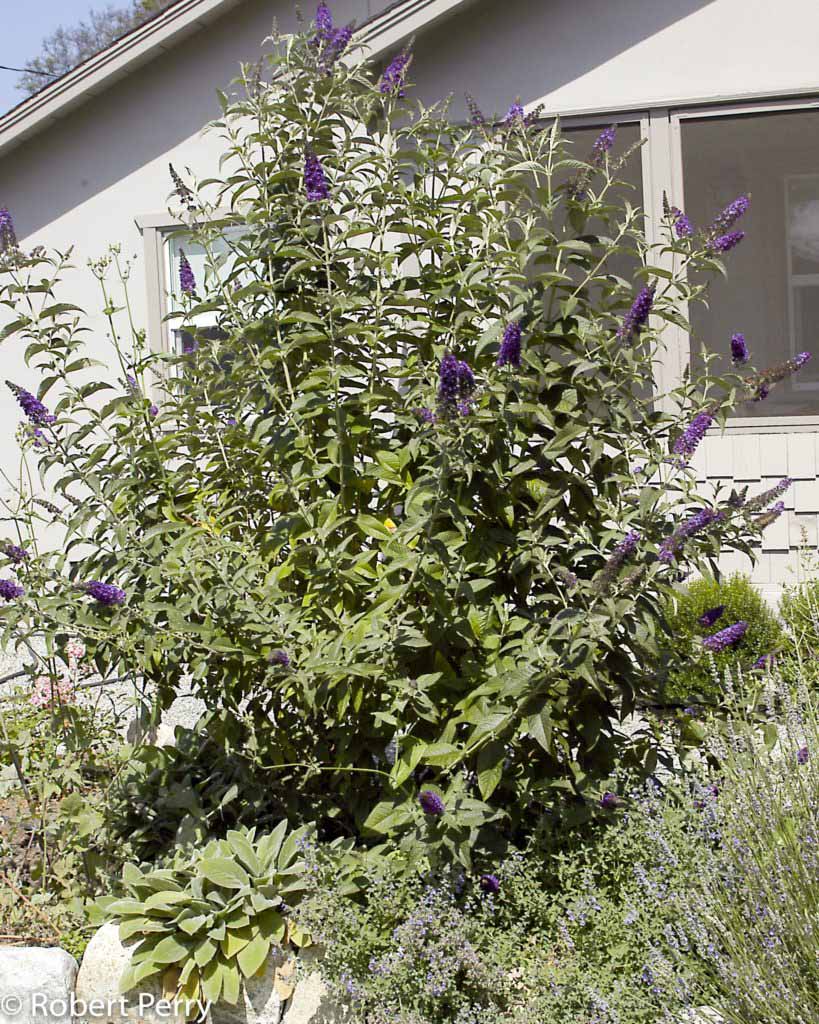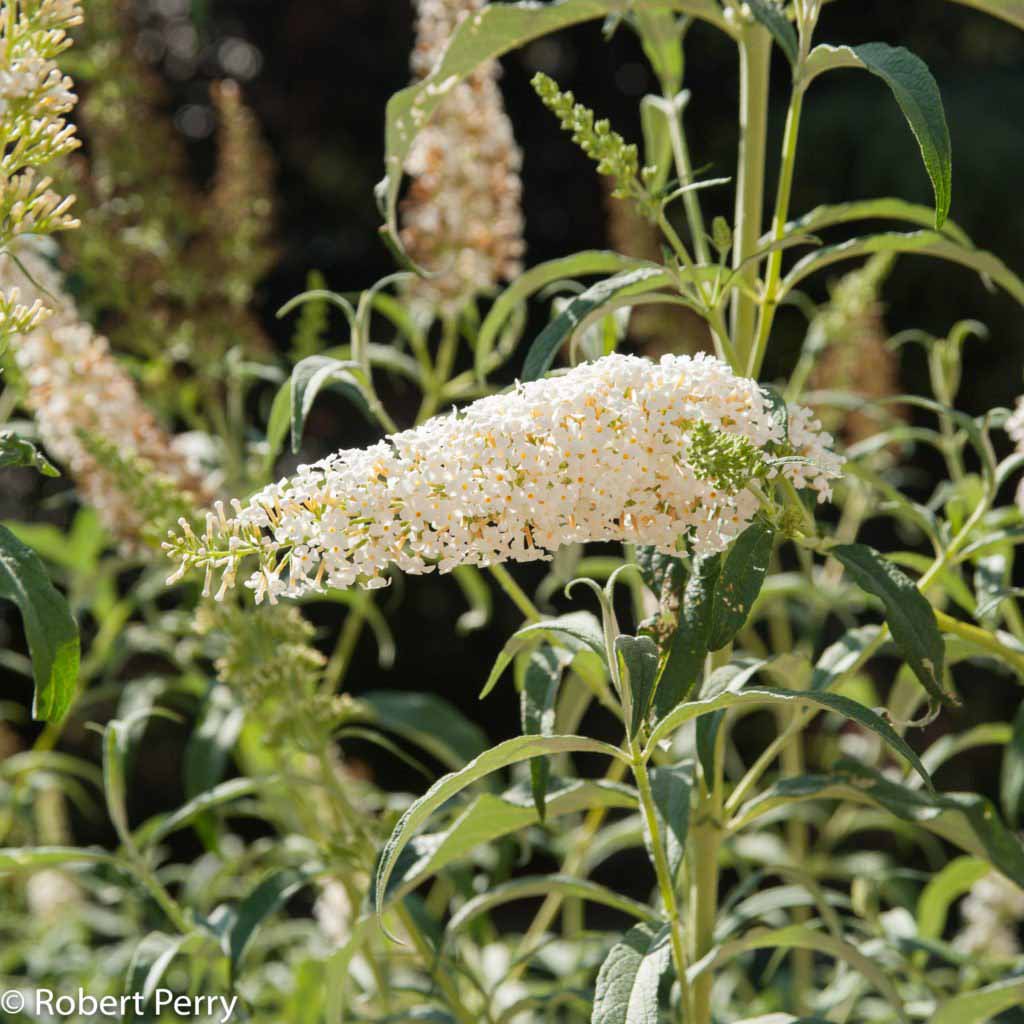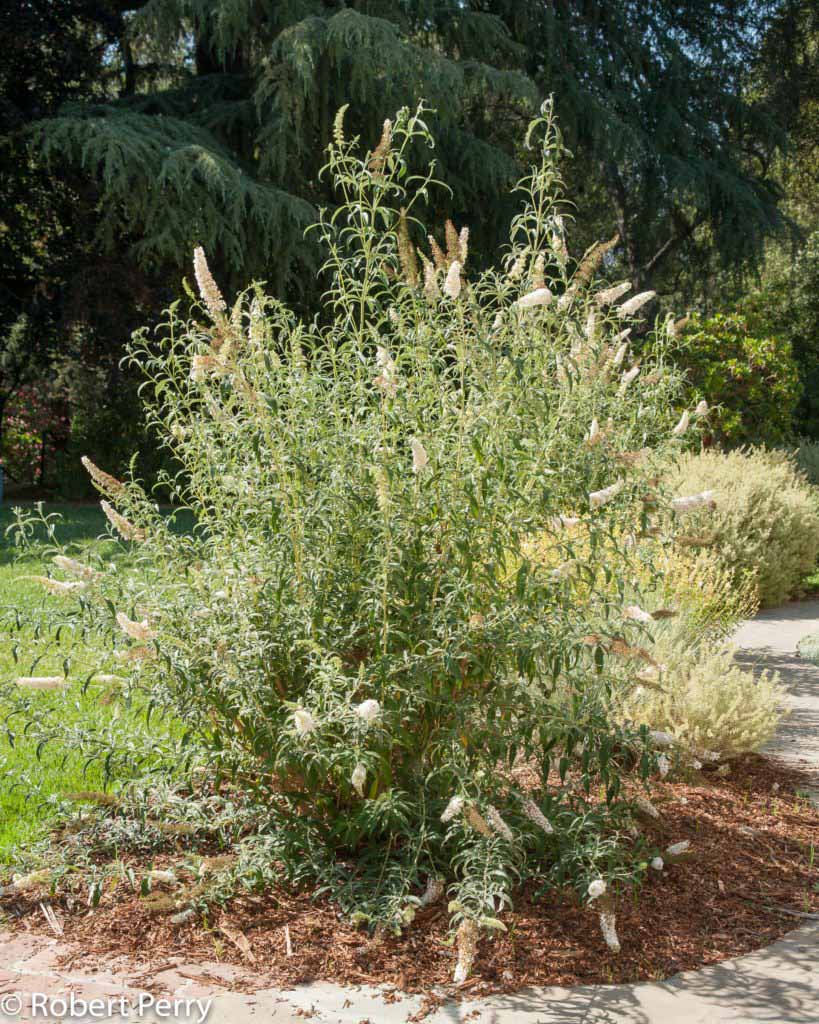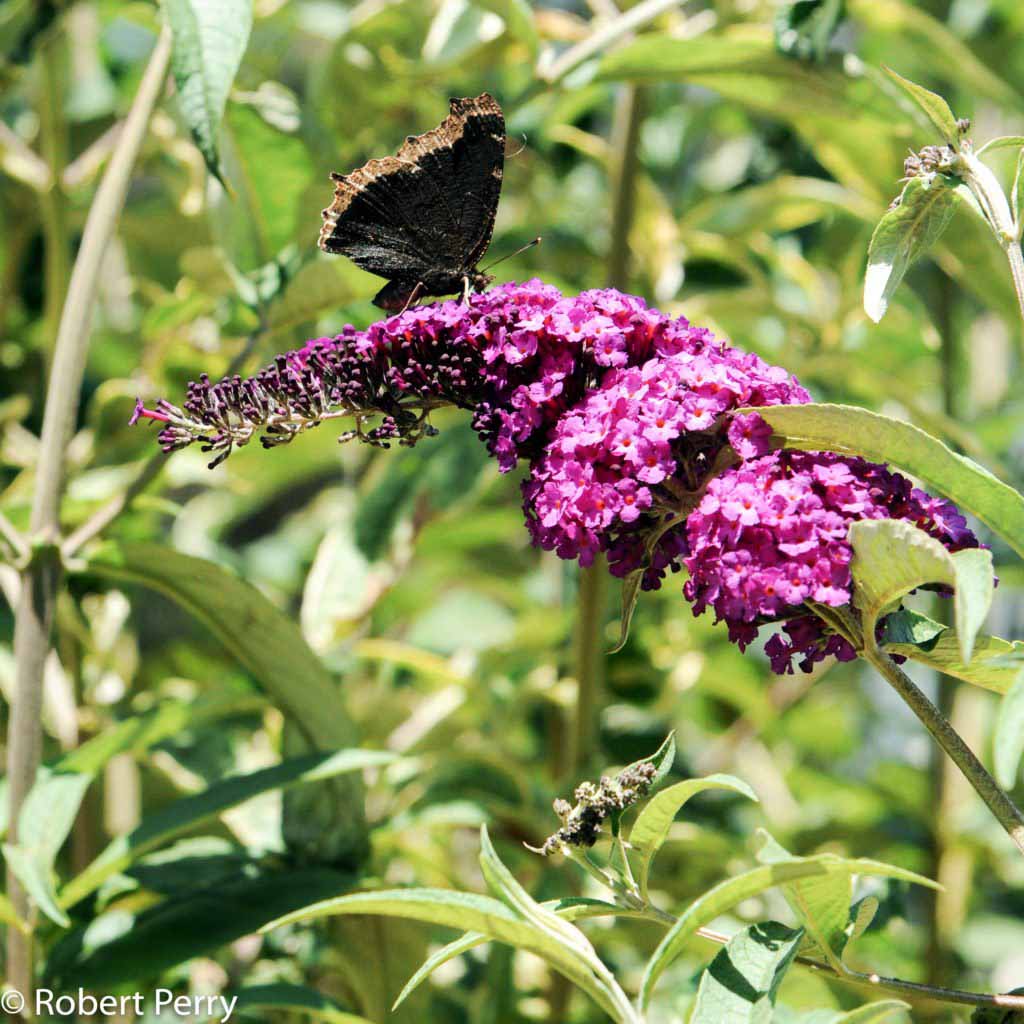Please note:
For most situations, we would not recommend installing this plant in new gardens, landscapes, or plantings in southern California.
It has long been used in gardens as a plant to provide nectar for butterflies, but gardeners in southern California have many better choices of native plants that are more attractive though more of the year and provide both nectar for adult butterflies and act as foliage host plants for caterpillars. Top shrubs to consider for this purpose instead of this plant include hollyleaf cherry, coffeeberry, and Concha ceanothus.
This plant profile is included in this site as a reference for two primary reasons:
- If you already have this plant in your landscape, this information can be used to know how to care for it.
- If you already have this plant in your landscape, you can use this information to learn which of our recommended plants have the same recommended watering needs, making them potential choices for grouping together if you will be adding new plants to the existing area.
In general, instead of this plant, we recommend planting appropriate California native plants whenever possible.
In addition to their beauty, California native plants offer the most additional benefits beyond just low water use, including habitat for the birds, butterflies, and pollinators who evolved here with them. This adds value and beauty in your landscape beyond just a pretty plant, allowing the landscape to actively contribute to the environment instead of just using less water. You can find our top recommended native plant choices on our Plant Finder by selecting “California Native” and learn more about California native plants here.
To learn what exactly California native plants are and how they are different from other low water plants, visit this link.
For visual interest or other reasons, some people may also want to mix in other non-native low-water demanding plant choices even though they do not have the same ecological value as native plants. For that reason, we feature a number of non-native waterwise selections on this site as well. However, we see native plants as the best “go to” for most landscape or garden choices! We encourage people to consider planting at least 50% of their landscape to native plants. See our Garden Designs section or visit our Waterwise Demonstration Garden in Montclair for plenty of inspiration.
————————————————————————————————————————————————
A wide range of cultivars are available from nurseries that provide white, blue, pink, magenta and purple flower colors and both standard and compact sizes. Most grow with an upright and arching branch habit and have pale green leaves with whitish undersides. Standard size plants can reach 10-12 ft. tall and as wide. Long panicles of colorful flowers occur in spring.
Butterfly bush grows best in full sun on loam-type soils and sustain with moderate amounts of supplemental water. It is deciduous, and in the winter, its exposed branches generally do not have an attractive structure. Some of the cultivars that can be found in nurseries and garden centers include: B.d. ‘Alba’ is a standard size plant with clear white flowers, B.d. ‘Black Knight’ grows 6-8 ft. high and 6-8 in. long upright panicles of dark purple flowers; B.d. ‘Harlequin’ is a smaller selection, 5-7 ft. high with magenta flowers.
